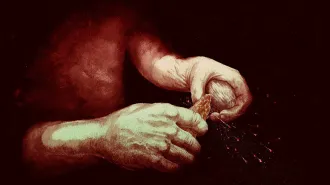Letters from the February 26, 2005, issue of Science News
Let’s move it, people
When I read of the Hubble Space Telescope–repair controversy (“People, Not Robots: Panel favors shuttle mission to Hubble,” SN: 12/18&25/04, p. 388; “Lean Times: Proposed budget keeps science spending slim,” SN: 2/12/05, p. 102), this question comes to mind: Why can’t an unmanned, powered vehicle latch on to Hubble and fly it to the International Space Station, where it could be repaired by the station’s occupants, then returned?
James Hendry
Florissant, Mo.
David S. Leckrone, senior project scientist for the Hubble Space Telescope Project, calls this “a very good question.” The basic problem, he explains, is that Hubble and the space station are in orbits with very different inclinations to the equator. It would require about 36,000 pounds of fuel to change Hubble’s orbit to that of the space station and back, and Hubble wasn’t designed to operate well at the station’s orbit. Says Leckrone, “It is an appealing idea that really isn’t feasible.”—R. Cowen
Type writer
“Vitamin C and diabetes: Risky mix?” (SN: 1/1/05, p. 12) doesn’t state whether the people in the study were type 1 (insulin-dependent) or type 2 diabetics. As a long-time subscriber to Science News, I would appreciate it if you would try to state whether it is type 1 or type 2 diabetes mellitus, or both, in future articles.
Carol Linn Miller
Norman, Okla.
The authors of the study say they didn’t determine which type of diabetes the patients had but add that “it is likely that the great majority of cases were type 2.” Nearly all patients were diagnosed with the disease only after age 30, when adult-onset diabetes typically takes hold.—J. Raloff
Reflections on a killer
It should be noted that DDT was a poor example to use as an enantiomeric insecticide (“Reflections on Insecticides: Mirror forms of agrochemicals set risk,” SN: 1/8/05, p. 20), since this chemical doesn’t have an asymmetric carbon and therefore can’t exist in “mirror forms.”
Gordon W. Gribble
Hanover, N.H.
DDT is a mixture of three forms of the chemical, one of which has enantiomers—not due to the presence of an asymmetric carbon but the relative position of the chlorine atoms on each of the molecule’s two benzene rings.—A. Goho







